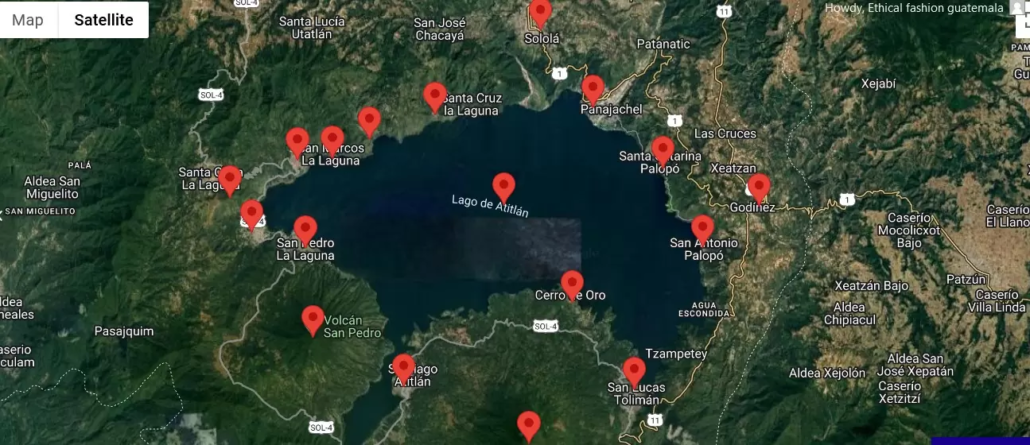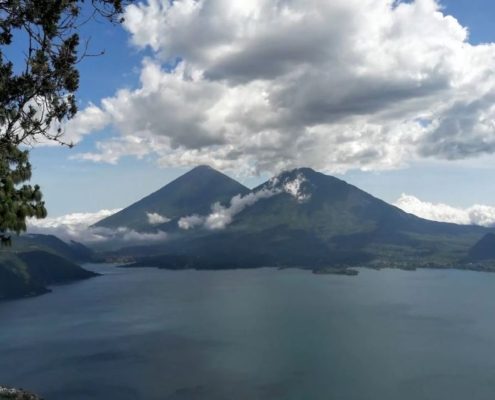Chuitinamit may be considered the first village situated on the southwestern shore of Lake Atitlán, specifically northwest of the town of Santiago Atitlán. Its strategic location offered the Tz’utujil Maya control over a key access point to the lake and surrounding areas. This location provided various advantages to the Chuitinamit residents:
- Access to the lake: The proximity to the lake facilitated fishing, transportation, and trade.
- Defensive position: The elevated location provided a natural defense against potential threats.
- Fertile land: The surrounding area offered fertile land suitable for agriculture, sustaining the community’s needs.
Understanding Chuitinamit’s location provides further context for its historical development and significance within the broader landscape of Lake Atitlán.
While the Post-Classic Period (900-1524 AD) was indeed a time of flourishing Maya civilizations, attributing the absolute “first village” title to Santiago Atitlán during this period lacks definitive evidence.
Here’s a breakdown of the known facts:
- Post-Classic Maya Flourishing: The Post-Classic Period witnessed significant advancements in Maya society, including developments in architecture, trade, and writing systems. This era saw the rise of powerful Maya kingdoms like the K’iche’ and the Kaqchikel.
- Lake Atitlán Settlements: Archaeological evidence suggests widespread habitation around Lake Atitlán during the Post-Classic Period, with several settlements like Santiago Atitlán potentially experiencing growth in population and complexity.
- Uncertainties about the “First Village”: Pinpointing the absolute “first village” established around the lake remains a challenge due to the limitations of available information and ongoing research. While some believe settlements on the eastern shore might predate others, definitive conclusions are difficult to draw.
It’s crucial to acknowledge the uncertainties surrounding the “first village” title while recognizing the valuable insights from historical and archaeological studies. The growth of settlements around Lake Atitlán during the Post-Classic Period is a well-established fact, contributing to our understanding of the Maya civilization’s legacy in the region.
The Submerged City of Samabaj is a fascinating archaeological discovery located on the eastern shore of Lake Atitlán in Guatemala.
Dating back to the Preclassic period (around 400 BC to 250 AD), this ancient Maya city offers a glimpse into a sophisticated civilization that predates the founding of Santiago Atitlán. The submerged ruins showcase impressive architecture, including temples, plazas, and stelae, hinting at a well-developed settlement that thrived centuries ago.
The discovery of Samabaj is relatively recent, with a local diver named Roberto Samayoa first encountering the underwater structures in 1996. Initially met with skepticism from archaeologists, who believed it to be scattered pieces of pottery, Samayoa’s persistence and later photographic evidence eventually convinced researchers of the site’s significance.
Samabaj’s unique underwater location has preserved the city in an almost untouched state, offering researchers a valuable opportunity to study Mayan life and culture without the disturbances of looting or urbanization. This makes it a highly significant archaeological site, holding the potential to unveil new information about the Maya civilization.




 Lake Atitlan Travel Services
Lake Atitlan Travel Services Guatemala Travel Services
Guatemala Travel Services